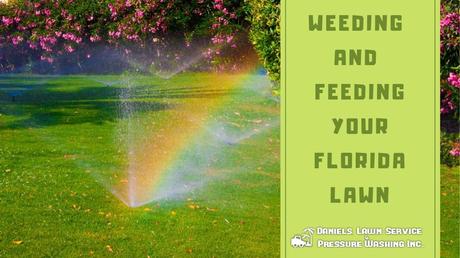
With Florida's warm subtropical climate, is required year-round. It may seem difficult to keep up with proper lawn care throughout the year, but there exist a number of simple, easy measures you can take to maintain a healthy lawn. Learn how to cultivate your green thumb with these tips and tricks for achieving your very own vibrant Florida lawn.
Proper Tips for Getting Your Lawn Thick
An unhealthy or dying lawn is instantly recognizable - the grass is thin and stiff, there may be visible dry spots and it has lost its vibrant green. While a dry spell in the weather combined with the intense Florida sun can naturally cause periods of dryness in your lawn, there are still ways to minimize the damage and keep up its luscious appearance. Caring for your lawn can be a breeze, no matter if it consists of St. Augustine grass or any other popular Florida grass .
Some important tips for getting your thick include:
- Check the Soil - A lawn can only be as good as the soil where it grows. Be sure to regularly test your soil to discover the specific needs of and any potential causes of problems with your lawn. Factors tested for and revealed in a soil test include pH levels and any other conditions affecting the current growth of your lawn. Getting a chemical understanding of your soil can direct you on the best plan of action for improvement. For example, a low pH level could possibly indicate the need for lime or other elements that can improve how well your lawn soaks in the necessary nutrients.
- Start Overseeding - Overseeding is especially important to improving the thickness of your lawn. This is done by sowing grass seed into the grass that is already planted in your lawn, which causes new grass to sprout in between any available space. Florida lawns should be seeded in the late spring to ensure optimal growth.
- Correctly Fertilize - Florida is no stranger to rainfall. While it can be a blessing for bringing essential water to your lawn, the rain can also drain the necessary nutrients in your soil that your lawn needs to thrive. Start a regular fertilization schedule in order to ensure that those important nutrients are not lost. There are different types of fertilizers that you can use, depending on the needs of your lawn. Fertilizer including nitrogen is a must-have to properly care for St. Augustine grass , in particular.
- Learn Proper Mowing Techniques - Your lawn certainly needs to be mowed, but it needs mowing on its own schedule - not yours. When it comes to frequency, you should mow your lawn as-needed in order to keep the grass at an appropriate height while also not trimming over a third of its height at one time. Thus, the rainy season may require more frequent mowing, and the dry season will require less. St. Augustine grass should be maintained at a height of about 3.5-4 inches. As for the mower's blade, the sharper the better in order to prevent stress on the grass and dulling of its green color. Improve the thickness of your lawn by routinely changing your mowing pattern.
Water Is Crucial
Water is the building block to all life, and your grass is no exception. However, you need to be careful not to over-water or under-water your lawn. Both actions can hinder the natural growth and thickness of your grass. When it comes to St. Augustine grass, you will need to pay special attention in order to know when it needs watering, since it doesn't require a regular watering schedule.
Signs that your St. Augustine grass may need water are when it shows hints of blue or if it stays flat when stepping on it (as opposed to springing back up). During the rainy season in Florida, you won't need to water your grass as often. However, when watering is needed, deeply irrigate your lawn about 3-4 inches early in the morning hours. This will help your grass grow deeper, stronger roots that will lead to thicker, fuller grass.
Dealing with Weeds
Not only do weeds look unpleasant in your lawn, but they also take away from the nutrients your grass needs to survive. Weeds should be taken care of as soon as they appear any time of year, but early autumn is especially a great time to start weeding your lawn.
It's important to remember a few key practices for dealing with :
- First, you need to be careful not to spray your lawn with weed killer immediately after mowing while also not too soon before the next time you mow. This will ensure that your grass will not be affected by the herbicides intended for the weeds.
- Crabgrass can best be kept at bay with an ongoing lawn care plan, which should include regular fertilization, pruned shrubs and trees, proper watering and consistent mowing.
- Carefully read the labels of the weed killers you use on your lawn. For St. Augustine grass in particular, herbicides that include MCPA and Bromoxynil are generally safe, while Dicamba-based ones are not safe to use. Be sure to research the types of herbicides that are most appropriate for the grass type of your lawn.
- Do not water your lawn too soon after applying weed killer, as this will make the herbicide settle more deeply into the roots of your grass.
Your Florida Lawn Care Experts
If you want to make sure your lawn is properly taken care of, then look no further than Daniel's Lawn Service and Pressure Washing Inc. Our experienced lawn care and landscaping professionals specialize in treating the needs of Florida lawns. Learn more about our lawn care services , and to schedule your next lawn care appointment!

